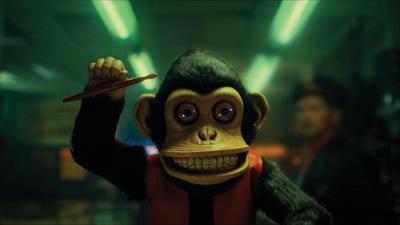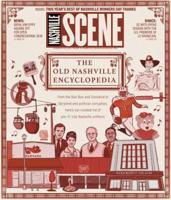Writer-director Osgood Perkins has, with just a quintet of films — all of them superb — made himself one of the most distinctive and thought-provoking creators in horror. He can do slow-burn drama, gothic fantasy, grungy glam and tragic timeslips with unsettling ease, juggling theme and mode but always focused on the way people engage with the most unfortunate of circumstances. The beauty of his latest, The Monkey, is its ability to embody all manner of the things we carry, or suppress, that have been part of our families for generations. That could mean any number of hereditary diseases, moral weaknesses or secret shames that we try to leave behind. But it’s always there, and it’s always the fracture point that can unmake everything. And that’s a pretty high concept for a film about a killer (do not call it a toy) monkey. But honestly, it feels very, very right for our collective mood at the moment.
Twin brothers Hal and Bill (Theo James as adults, Christian Convery as kids) are not those dress-alike, secret-language, psychic-link, “you and me against the world” kind of identical twins. They are aesthetically, ideologically and socially complete opposites, and Convery and James are so good at playing, inhabiting and living this differentiation that the fact that it’s the same actor feels overwhelming. It’s an achievement comparable to Jeremy Irons in Dead Ringers or Nicolas Cage in Adaptation — only twice in the same movie.
The twins’ mother, Lois (Tatiana Maslany, of Orphan Black and She-Hulk renown), is a soft-goth pragmatist who carries the burdens of perspective and always being outnumbered, even in her own house. We meet Hal and Bill’s estranged father, played by Hellraiser: Bloodline and Parks and Recreation’s Adam Scott, only in the film’s opening scene, which lays out the framework by which this monkey operates. It’s a brutal and creative moral challenge, this monkey drummer, equal parts Richard Matheson’s The Box and Pee-wee Herman’s breakfast machine with a soupçon of 1984 Depeche Mode fatalism (which it even quotes on its elegant hatbox home), slightly less imposing but far more lethal than Chris Cunningham and the Aphex Twin’s monkey drummer.
Someone turns the wind-up crank on the monkey’s back, it beats its drum, and someone dies. An action is taken, and an equal and opposite reaction occurs. And while its baroque and brutal mechanisms of death may call to mind the Final Destination series (with a new installment of that sorely missed series coming this summer), The Monkey is taking a different approach. The Final Destination films view death as something inescapable and egalitarian — a challenge that can be delayed, sometimes even dodged, but never fully escaped. The Monkey’s cosmology is rooted in the specific actions and failures of human behavior, and it aims to fuck up your mind.
We’re currently inside an unexpected wave of interesting and grotesque horror. (In the first two months of 2025, we’ve gotten Presence, Companion, Heart Eyes and now The Monkey, each of which is good-to-great, does something completely different, and yet somehow, as horror so often does, speaks directly to the moment we’re in.) The Monkey emerges as a favorite just because of how it finds the balance between the sad family story you only hear when someone’s had too much to drink and what happens when your buddy gets a bit too stoned and simply has to tell you about the most fucked-up thing they ever saw. Oh, side note: Corey from Halloween Ends is back! He’s playing an unpredictable aspect of the cosmic death circuit the evil monkey has the Shelbourne family ensnared in, and his wig acting is exactly right for the tone of the film.
You just don’t expect a killer-monkey film to dwell on the ways rage, resentment and sadness are like fundamental building blocks of existence, incapable of being created or destroyed, merely kept at bay (or closely controlled) — like a dog or cat that just genuinely hates people. Or the way you keep toxic people in your life so you can keep an eye on them — so they don’t do more damage to themselves or others. Perhaps Perkins was tapping into the 1988 George Michael hit “Monkey” just as much as the 1980 Stephen King story the film adapts.
This is not an explicitly faithful adaptation of that short story, but it does demonstrate why King is the modern master of the short-story form — the central idea is so good that it can be evolved in all manner of ways, but the derived material remains true to the text that gave it life. (Note: This is no The Lawnmower Man, which is an interesting cautionary tale about mistaking a hodgepodge of bravado and immediacy for something visionary.) A King short story collection remains, as always, a reliable foundation for any horror library.
There’s something resigned about the universe Perkins gives us, with the comic tones finding a perfect balancing point between gleefully outrageous gorescapes (personal faves involve a hibachi incident and golfing) and the kind of gallows humor you’d find in M*A*S*H or a particularly grisly Coen brothers film. But The Monkey is neither glib nor edgelord — it’s very much about how we respond to untenable situations and how we reconcile all the messy pieces of the past that can sort of Tetris-ize together into something approximating a life. And damned if Oz Perkins hasn’t done it again, crafting something ghoulish and awesome that you feel deep in your guts.





